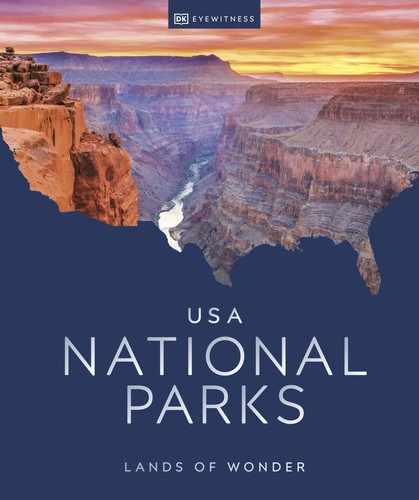
Arizona
GRAND CANYON
ESTABLISHED 1919
Stand on the canyon rim and gaze at the vast, river-carved landscape of battered buttes and rugged pinnacles stretching away into the horizon, and you’ll know you are looking at one of the most incredible vistas in the world.
Few places can leave you speechless, but this is one of them. Words like magnificent and stupendous pale in comparison to the scene that stretches as far as your eyes can see. No matter how many pictures you’ve seen, nothing prepares you for the unparalleled beauty of the Grand Canyon.
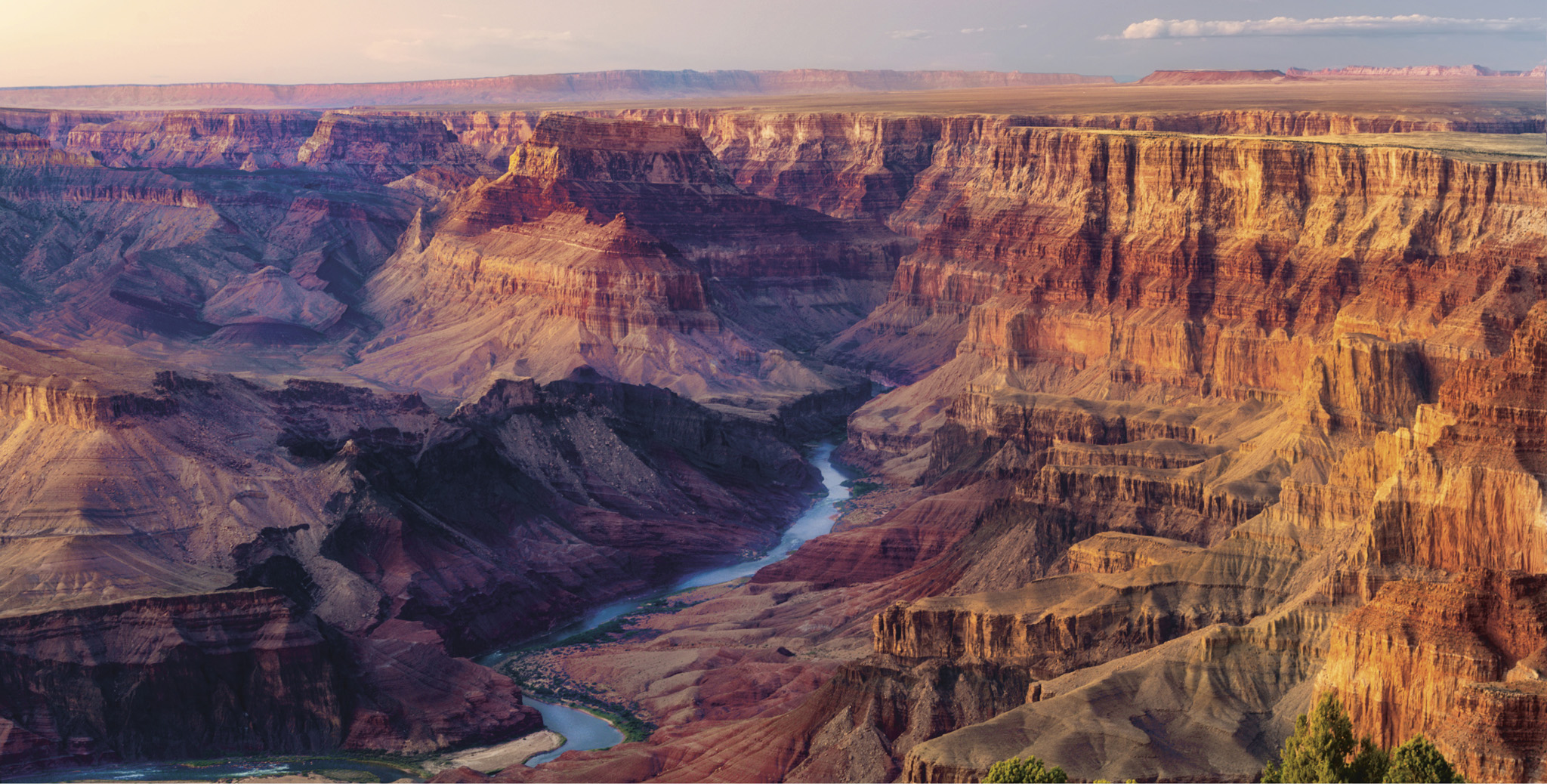
The canyon offers an embarrassment of riches at every turn—here, a stunning sunset over the Colorado River
Did You Know?
The park is often measured in river miles: 277 (456 km).
Millions of years in the making
The immensity of it is overwhelming. Sculpted buttes rise layer upon layer from the canyon floor, fading into distant, flat-topped mesas. From some viewpoints, it’s just possible to make out the pencil-thin ribbon of blue that is the Colorado River, a mile below. Over millions of years, this mighty river carved out a giant chasm in the Colorado Plateau. Wind, rain, frost, and snow did the rest, eroding the rugged bluffs into singular peaks with such whimsical names as Wotan’s Throne, Cheops Pyramid, and Buddha Temple. When you admire the striated cliffs of sandstone, limestone, and shale, you are looking at two billion years of the Earth’s geologic backstory.
Along the canyon’s South Rim, humans, too, have made their mark, with distinctive, historic architecture that complements the park’s natural beauty. Here, and across the chasm on the quieter North Rim, hiking trails and other pursuits let you immerse yourself in these glorious surroundings.
Few places on earth have the vastness and timelessness of the Grand Canyon. Try to spend a full day here, ideally an overnight, to experience it at different times of day—its colors and moods constantly in flux. In the crisp chill of dawn, thick clouds fill the canyon, and the rocky pinnacles poking out of the mist are tinged with soft-pink sunrise. Throughout the day, passing clouds may suddenly cast the brightly hued buttes into ominous shadow. And in late afternoon, the rainbow cliffs turn glowing orange, pink, and gold in the fiery rays of the setting sun.
History Timeline |
|
|
The Grand Canyon faced a long road to becoming a national icon. Benjamin Harrison tried three times to create a national park here. He succeeded in 1893, after he was president. |
|
1901The first passengers arrive from Williams on the Grand Canyon Railway. The three-hour trip replaces the two-day stagecoach journey from Flagstaff, and costs $3.95. |
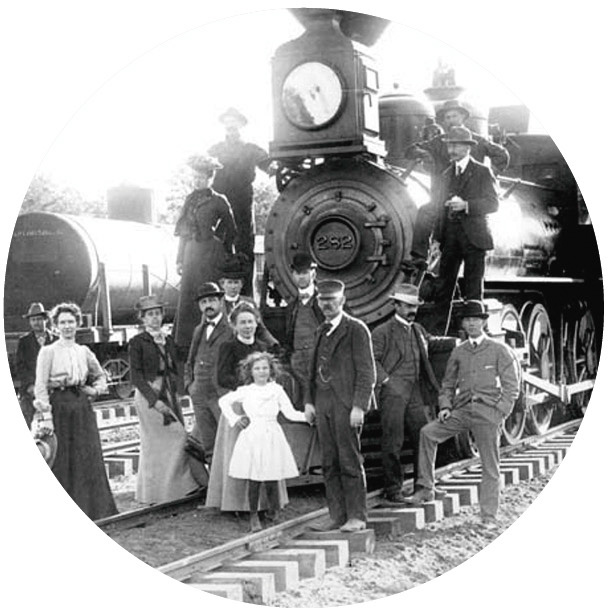
|
1903President Theodore Roosevelt visits the Grand Canyon and says it “fills me with awe.” He declares it to be “the one great sight that every American should see.” |

|
1906–08Roosevelt establishes the Grand Canyon Game Preserve and the Grand Canyon National Monument, vowing to keep this natural treasure unspoiled. |
|
1933–42During the Depression, FDR’s Civilian Conservation Corps of unemployed men carry out conservation duties, building trails and roads still in use today. |
|
2019Grand Canyon National Park, a UNESCO World Heritage Site, celebrates its centennial with a yearlong “100 Years of Grand” showcase of park highlights. |
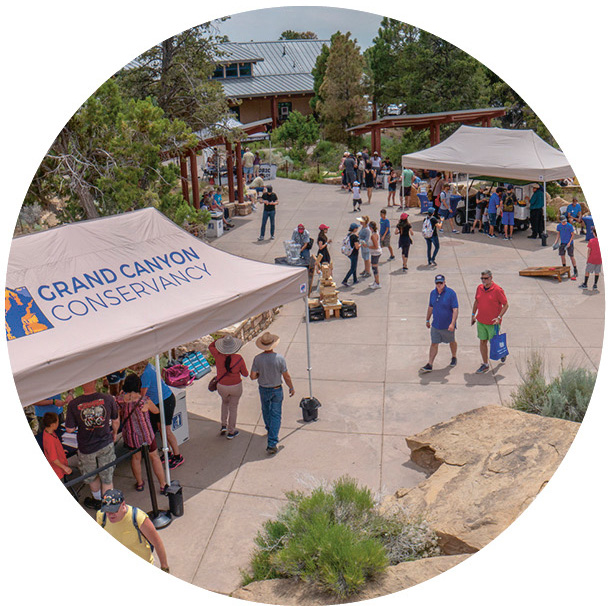
|

PARK PIONEERS
Mary Colter
At a time when there were few women architects, Mary Colter was the chief architect for the Fred Harvey Company from 1902 to 1948. Taking her inspiration from the surrounding landscape, she designed six distinctive buildings at the South Rim of the Grand Canyon: Hopi House, Hermit’s Rest, Lookout Studio, Desert View Watchtower, Bright Angel Lodge, and, at the bottom of the canyon, Phantom Ranch. The first four of these are now National Historic Landmarks (see Harmonious architecture).

Lodgers stay in Park Service cabins, this one nestled in a perfect spot between the Colorado River and Bright Angel Creek
Natural and human artistry
The South Rim is the most accessible and busiest section of the park. Grand Canyon Village, the hub of the South Rim, is where most people get their first breathtaking look into the chasm.
To reduce air pollution and maintain the pristine views, the road beyond is usually closed. A shuttle bus runs the 8-mile (13-km) route along Hermit Road, stopping at eight magnificent viewpoints. The last one, Hermit’s Rest, is a popular place to see the sunset. A fabulous way to enjoy the canyon is to walk the trail along the South Rim between these viewpoints, taking playful photographs and lingering at secluded spots to watch eagles or California condors gliding effortlessly on the breeze.
In Grand Canyon Village, explore the amazing architecture, such as the rustic El Tovar hotel, Hopi House, or tiny Kolb Studio, clinging to the cliff’s edge. These buildings were visionary for their time, using natural materials that blended with the landscape and evoked American Indian culture. Here, too, is the depot for the Grand Canyon Railway, a heritage railroad that takes you from Williams in restored vintage railcars. Desert View Drive heads east to more spectacular viewpoints, such as Yaki Point and Grandview Point. At the Tusayan Ruin and Museum are remnants of an Ancestral Puebloan village. Their ancient architecture inspired Mary Colter’s fantastic Desert View Watchtower, perched on the canyon’s edge, which contains intricate design details and paintings of Hopi life and legends. Climb the winding stairs to the top for incredible panoramic canyon views.
Canyon Culture
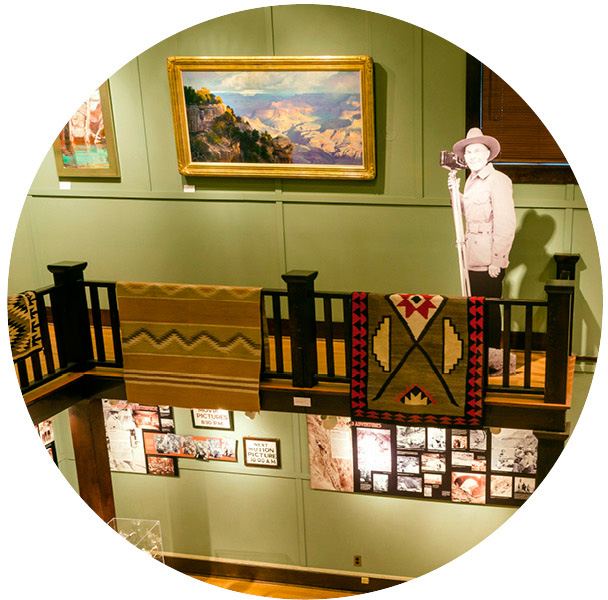
Kolb Studio ▷ The historic home and photographic studio of Ellsworth and Emery Kolb is now a bookstore and art gallery, where many of their images from the early 1900s are on display (see Visionary photography).
Desert View Watchtower Cultural demonstrations by tribal artisans from the Grand Canyon region, including Navajo weavers, Hopi kachina carvers, Zuni silversmiths, and more, take place here throughout the year.

Hopi House ▷ Shop for fine Southwestern arts and crafts at this striking Pueblo-style building, designed by Mary Colter in 1905 as an American Indian market. Hopi artisans once lived and worked here.
Grand Canyon Star Party For eight days each June, around the time of the new moon, Arizona amateur astronomers come together to study the night sky at free public events held on the North and South rims.
FLORA AND FAUNA
California Condors
With a wingspan up to 10 ft (3 m), the California condor is North America’s largest bird, but in the 1980s it became extinct in the wild. Saved through captive breeding, these vultures were released in Arizona in 1996; today, they number 500. From the South Rim, you might see them soaring over the canyon below.


Point Imperial looks down on the Painted Desert from a height of 8,803 ft (2,683 m)
Exhilarating exploration
As grand as the canyon appears from above, descending even a little way into its depths gives you an intimate connection to this remarkable place. Steep, rugged trails wind among the rocks down to the canyon floor, but these routes require backcountry camping. Even the fittest, most seasoned hiker cannot make it down and back in a day. There’s an annual lottery for coveted overnight stays at Phantom Ranch at the bottom of the canyon.
Day hiking below the rim is an easier option. Bright Angel Trail is the most accessible, and even a brief trek from Grand Canyon Village is a thrill. As wonder and curiosity lure you deep in, keep in mind that it generally takes twice as long to hike back up. This route is also used for the park’s famous mule rides along the rim and into the inner canyon.
Hermit Road is open to cyclists year-round, and loops back to the village along the Greenway Trail. Float trips on the Colorado River give you icy highs through whitewater rapids, followed by tranquil views of the canyon from the bottom up.
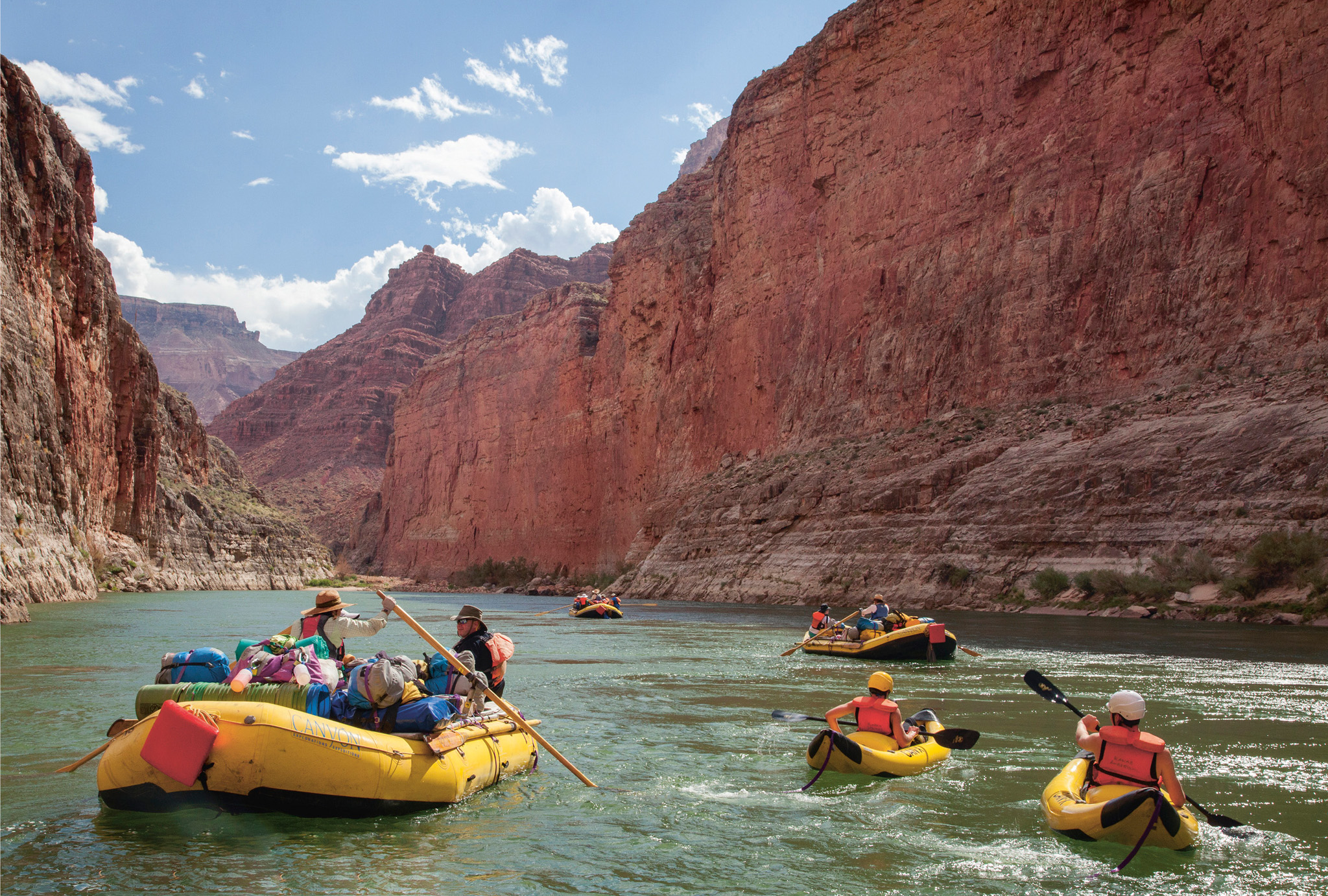
Adventurers enjoy the thrill of rafting and kayaking on the Colorado, and become part of the scenery
Northern serenity
Although just 10 miles (16 km) away as the eagle flies, the North Rim is a five-hour drive from the South Rim. It’s also 1,000 ft (300 m) higher—at over 8,000 ft (2,400 m)—and is closed in the winter. The North Rim is a cooler, quieter section of the park. Farther from the river, it is covered in alpine scenery, with thick forests of Douglas fir and ponderosa pine that are a haven for wildlife, as well as meadows and aspen trees that turn bright gold in the fall.
The winding Cape Royal Scenic Drive leads to the best overlooks. From Point Imperial, the highest point on the North Rim, survey the eastern Grand Canyon and see the distant wall of the Painted Desert and Marble Canyon. Vista Encantada affords more canyon views, and from the Walhalla Overlook, it’s a short walk to Pueblo ruins.
Cape Royal, with its 180-degree vistas, is a wonderful spot to see the sun rise or set over the canyon. Here, Angel’s Window, a natural arch, artfully frames the Colorado River. Walk the short Cape Royal Trail to spy the silhouette of Desert View Watchtower across the chasm on the South Rim.
The North Rim has hiking trails that are less strenuous for day hikes than those on the South Rim: Bright Angel Point, with splendid views of Bright Angel Canyon and Roaring Springs, and the Transept Trail, along the rim between the park lodge and campground. Even a short walk on these easy trails delivers enough Grand Canyon magnificence to fill all your senses.
![]()
The South Rim is more peaceful in winter, and you can witness the canyon covered in a magical frosting of powdery snow.
Three Hikes
Easy Uncle Jim Trail, 5 miles (8 km) round trip. This trail on the North Rim leads through old-growth forest to an overlook with fine views of the canyon and the switchbacks on the North Kaibab Trail.
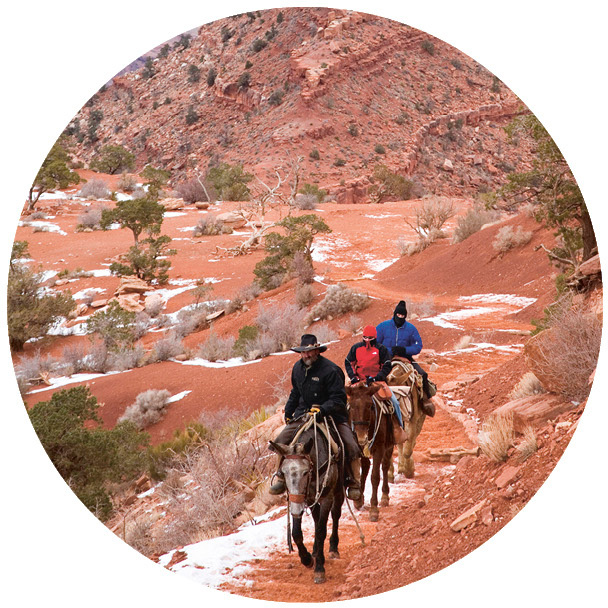
Moderate ▷ South Kaibab Trail, 2–6 miles (3–10 km) round trip. Steep but relatively short, this hike on the South Rim offers spectacular views and the chance to spot California condors and bighorn sheep.

Challenging ▷ Rim-to-Rim Trail. This multiday trek joins the 14-mile (22-km) North Kaibab Trail from the North Rim to the South Kaibab or Bright Angel (9.5 miles/15 km) trail from the South Rim.
